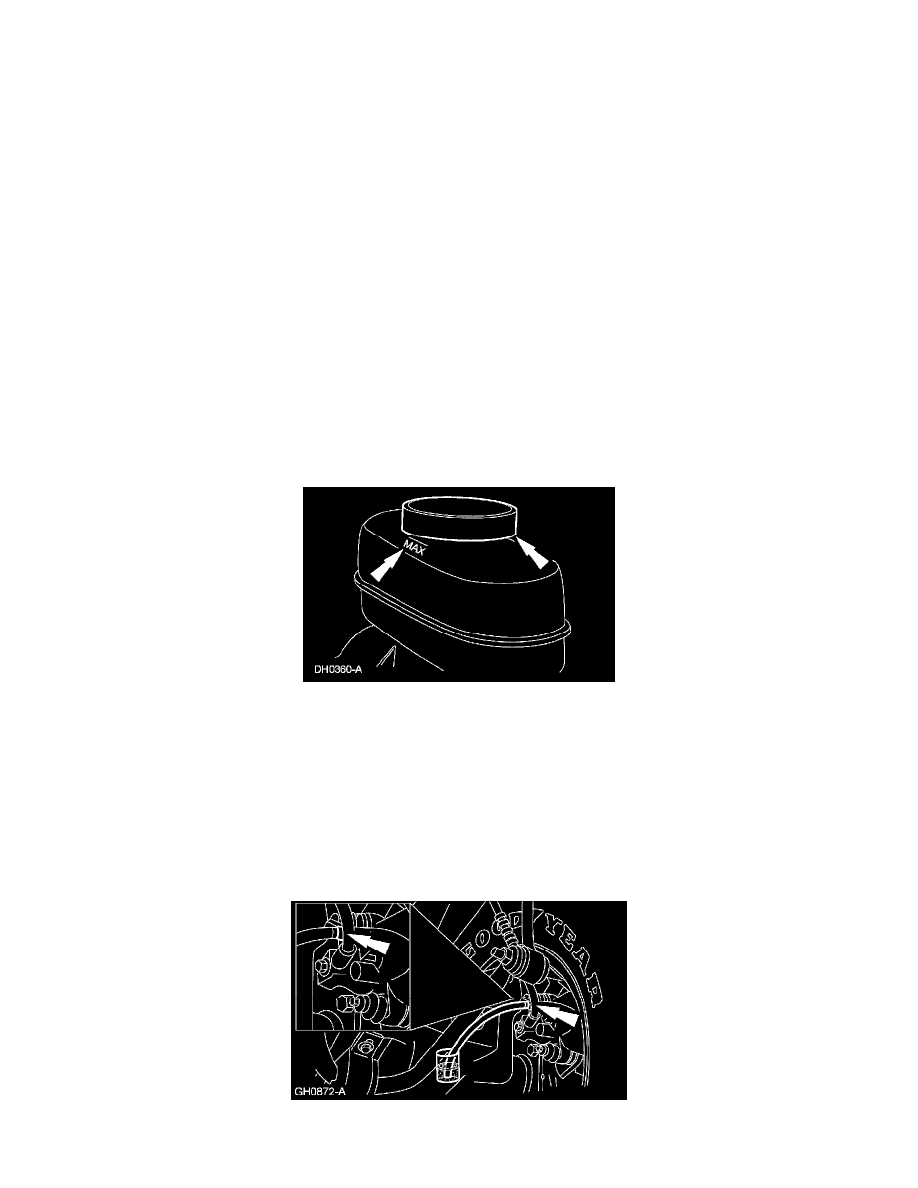Grand Marquis V8-4.6L VIN V Flex Fuel (2006)

Brake Bleeding: Service and Repair
Manual Bleeding
Manual Bleeding
WARNING: Use of any brake fluid other than approved DOT 3 will cause permanent damage to brake components and will render the
brakes inoperative. Failure to follow these instructions may result in personal injury.
WARNING: Brake fluid contains polyglycol ethers and polyglycols. Avoid contact with eyes. Wash hands thoroughly after handling. If
brake fluid contacts eyes, flush eyes with running water for 15 minutes. Get medical attention if irritation persists. If taken internally, drink
water and induce vomiting. Get medical attention immediately. Failure to follow these instructions may result in personal injury.
CAUTION: Do not allow the brake master cylinder reservoir to run dry during the bleeding operation. Keep the brake master cylinder reservoir filled
with the specified brake fluid. Never reuse the brake fluid that has been drained from the hydraulic system.
CAUTION: Brake fluid is harmful to painted and plastic surfaces. If brake fluid is spilled onto a painted or plastic surface, immediately wash it with
water.
NOTE: Pressure bleeding the brake system at 207 - 345 kPa (30 - 50 psi) is preferred to manual bleeding.
NOTE: When any part of the hydraulic system has been disconnected for repair or installation of new components, air can get into the system and
cause spongy brake pedal action. This requires bleeding of the hydraulic system, including the hydraulic control unit (HCU) after it has been correctly
connected.
NOTE: If the HCU or any component upstream of the HCU are installed new, carry out the brake system bleed procedure first without the diagnostic
tool, followed by the brake system bleed procedure using the diagnostic tool.
1. Clean all dirt from and remove the brake master cylinder filler cap and fill the brake master cylinder reservoir with DOT 3 motor vehicle brake
fluid.
2. WARNING: If equipped with fire suppression system, depower the system. For important safety warnings and procedures, refer to Fire
Suppression System.
If equipped with fire suppression system, depower the system.
3. NOTE: For ABS only vehicles, open the master cylinder bleed screw until clear, bubble-free fluid flows from the tube into the cup.
NOTE: Bleed the brake system from the longest to the shortest brake line.
Place a box end wrench on the bleeder screw. Attach a rubber drain tube to the bleeder screw and submerge the free end of the tube in a container
partially filled with DOT 3 motor vehicle brake fluid.
